Sublimation Ink for Regular Printing: Can You Use It?
Imagine you’re gearing up for a special project, hoping to create vibrant, long-lasting prints. You’ve heard about sublimation ink’s impressive qualities, but you’re using a regular printer.
Is it possible to use sublimation ink in your setup? This question often arises among those eager to explore new printing techniques without investing in specialized equipment.
In this article, we’ll explore the world of sublimation ink and how it can be used with regular printers. We’ll cover everything from understanding sublimation ink to preparing your printer for the task.
Quick Overview
When heated, sublimation ink transforms from a solid to a gas, allowing it to bond with materials for vibrant, durable prints. Unlike regular ink, which sits on the surface, sublimation ink embeds into the material, resulting in long-lasting, fade-resistant images.
However, using sublimation ink in a regular printer requires a compatible inkjet model with piezoelectric printheads (like many Epson printers), modifications, and thorough cleaning to handle the ink properly.
The process involves preparing your printer by cleaning it, installing sublimation ink cartridges, and adjusting settings to match the specific requirements of sublimation printing. Troubleshooting issues like print quality problems and regular maintenance are crucial for achieving consistent results.
While the initial investment in sublimation ink and supplies is higher than regular ink, the enhanced print quality and durability can offer long-term benefits, making it a worthwhile option for high-quality printing projects.
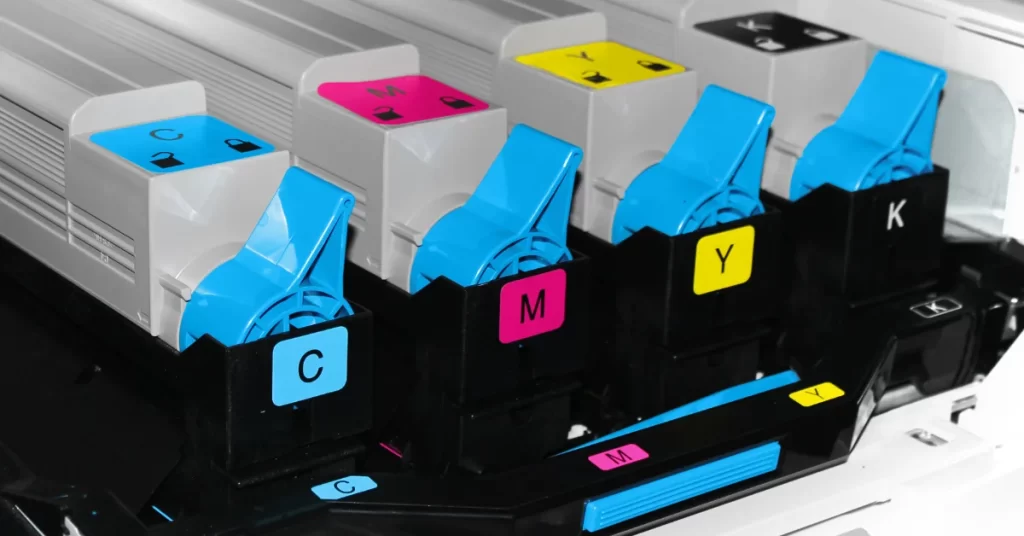
Understanding Sublimation Ink
Sublimation ink is a unique type of ink used in the sublimation printing process. Unlike traditional inks, which sit on the surface of the paper or fabric, sublimation ink undergoes a chemical transformation when heated. It turns from a solid state directly into a gas, skipping the liquid phase. This gas then permeates the surface of the printing material, resulting in vibrant, long-lasting prints that are resistant to fading and cracking.
Key Characteristics of Sublimation Ink:
- Heat-activated transformation requires heat to transition from solid to gas, allowing the ink to bond with the printing material.
- Vivid Colors: Produces bright, high-quality images with excellent color accuracy.
- Durability: Results in prints that are highly resistant to washing, UV light, and general wear and tear.
- Material Compatibility: It is best suited for polyester fabrics and coated materials, making it ideal for custom apparel, mugs, and other promotional items.
Differences Between Sublimation Ink and Regular Ink
Understanding the distinctions between sublimation ink and regular ink is crucial for successful printing:
- Chemical Composition:
- Sublimation Ink: Composed of dye particles suspended in a liquid carrier, designed to vaporize when heated.
- Regular Ink is typically water—or oil-based, containing pigments or dyes that dry on the surface of the printing material.
- Printing Process:
- Sublimation Ink: A heat press is required to activate the ink and transfer the image onto the material.
- Regular Ink: This type of ink uses standard printing methods, such as inkjet or laser printing, where the ink dries on the surface.
- Results:
- Sublimation Ink: Infuses into the material, providing a smooth finish with no discernible texture and superior durability.
- Regular Ink: Sits on top of the material, leading to smudging, fading, and a less durable finish.
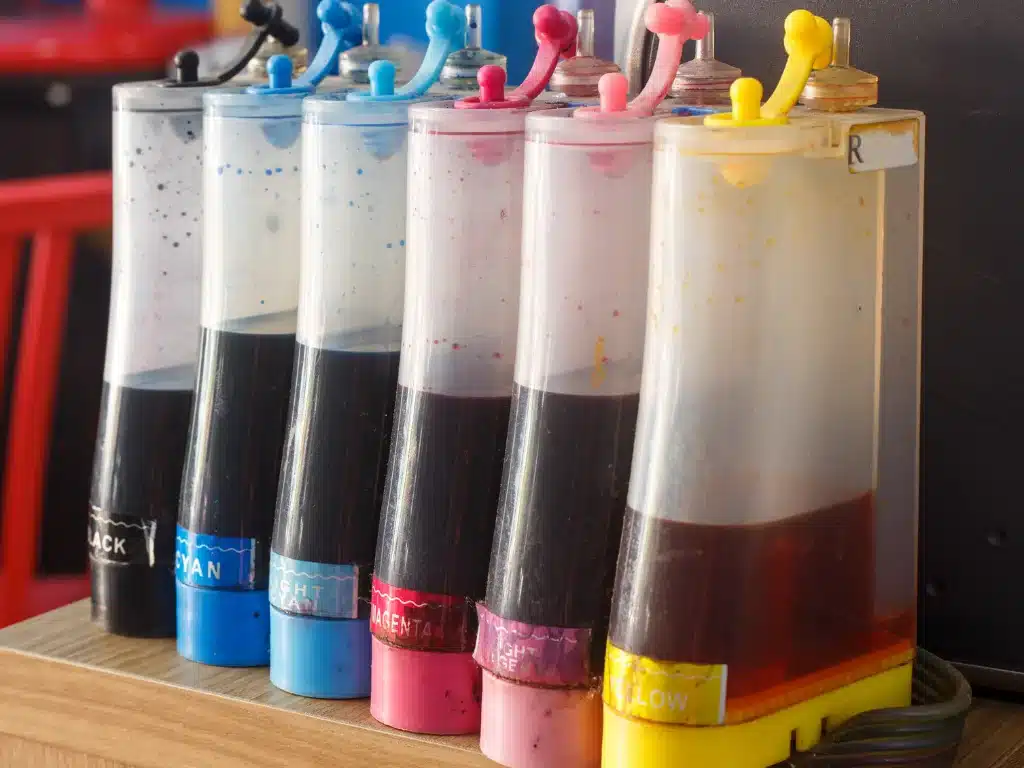
Compatibility with Regular Printers
Can You Use Sublimation Ink in Regular Printers?
Using sublimation ink in a regular printer can be tricky, but it is possible with some considerations and modifications. Here’s what you need to know:
- Printer Types: Not all regular printers can handle sublimation ink. Inkjet printers with piezoelectric printheads, such as certain Epson models, are compatible with sublimation ink. Printers with thermal printheads, commonly found in HP and Canon models, are not suitable because the heat used in these printers can cause sublimation ink to vaporize prematurely.
- Modifications Needed: To use sublimation ink in a regular printer, you might need to make specific adjustments. These can include changing the ink cartridges and using software adjustments to manage the ink flow and printing settings.
Potential Risks and Challenges
Switching from regular ink to sublimation ink involves certain risks and challenges:
- Printer Damage: If not used correctly, sublimation ink can clog the printhead, potentially causing irreversible damage to your printer. It’s important to thoroughly clean your printer before introducing sublimation ink to avoid mixing inks and causing blockages.
- Print Quality Issues: Regular printers aren’t designed for the unique properties of sublimation ink. This can result in poor print quality, such as blurred or streaky prints if the printer settings aren’t adjusted properly.
Printer Preparation
Before you begin using sublimation ink in your regular printer, it’s essential to prepare your equipment:
- Clean the Printer: To prevent contamination, remove any traces of regular ink. This can involve thoroughly flushing the printhead and ink lines.
- Install Sublimation Cartridges: Replace your regular ink cartridges with sublimation ink cartridges specifically designed for your printer model.
- Adjust Printer Settings: Use the printer’s software to select the correct media type and quality settings suitable for sublimation printing. This may involve creating custom profiles for the best results.
Switching Between Regular Ink and Sublimation Ink
Can You Use Regular Ink and Switch to Sublimation Ink When Needed?
Definitely not. Printers can be switched, but not on an as-needed basis. You must completely flush the system to switch from regular ink to sublimation ink. The reason is the difference in the color and chemical makeup of the inks.
Mixing regular ink and sublimation ink will lead to poor print quality and improper bonding to the substrate, causing a mess and wasting ink. Moreover, switching back from sublimation ink to regular ink might not pose as many issues, except for slight color differences and the waste of expensive sublimation ink.
Why Flushing is Essential
Using sublimation ink in a printer that has previously used regular ink without proper flushing can result in several issues:
- Incorrect Prints: The remnants of regular ink will mix with the sublimation ink, causing colors to come out wrong.
- No Bonding: Regular ink does not bond to the substrate like sublimation ink, leading to poor-quality prints that may easily wash away or fade.
- Clogged Printheads: Mixing different types of ink can clog the printheads, causing further printing problems and potentially damaging the printer.
Recommended Practices
To avoid these issues, it’s recommended that a printer solely be dedicated to sublimation printing. This prevents the need for constant flushing and ensures consistent, high-quality prints. For regular printing needs, having a separate, inexpensive color laser printer like the Samsung CLP-316 can be a practical solution.
Maintaining a Dedicated Sublimation Printer
- Idle Time: A good sublimation printer can sit idle for weeks and still start up and print efficiently due to its built-in start-up and shutdown processes that keep the printhead clean.
- Cost-Effectiveness: Maintaining a dedicated sublimation printer avoids wasting the costly sublimation ink required for flushing out regular ink.
User Recommendations
- Chris Alexander emphasizes the benefits of a dedicated sublimation printer that can remain idle and still function effectively, noting that this avoids the mess and ink wastage associated with switching inks.
- Mr&Mrs and Lee J. both stress the importance of having a separate sublimation printer to prevent ink mixing and ensure the printer’s longevity.
- Steven R. highlights the difficulty of completely purging regular ink from the system, reinforcing the advice to use a dedicated sublimation printer.
For detailed guidance on flushing ink and transitioning to sublimation ink, consult resources such as the Sawgrass Ink website, which offers comprehensive support for using their sublimation inks.
Step-by-Step Guide to Using Sublimation Ink in Regular Printers
Preparing Your Printer To get started with sublimation ink in your regular printer, follow these steps to ensure a smooth transition and optimal performance:
- Clean Your Printer:
- Flush the Printhead: Use a cleaning solution to remove residual regular ink from the printhead and ink lines. This step is crucial to avoid clogging and ensure the purity of the sublimation ink.
- Check the Nozzles: Run a nozzle check to ensure all previous ink is cleared out. Repeat the cleaning process if any old ink remains.
- Install Sublimation Cartridges:
- Replace Regular Ink Cartridges: Carefully remove the regular ink cartridges from your printer.
- Insert Sublimation Ink Cartridges: Install the new sublimation ink cartridges according to the manufacturer’s instructions, ensuring they are securely in place.
- Update Printer Settings:
- Select Media Type: Adjust the printer settings to match the type of paper or material you’ll be printing on. Sublimation paper is typically used for the best results.
- Adjust Quality Settings: Choose the highest print quality setting to ensure vibrant and detailed prints.
- Create Custom Profiles: If your printer software allows, create custom color profiles to optimize ink usage and color accuracy for sublimation printing.
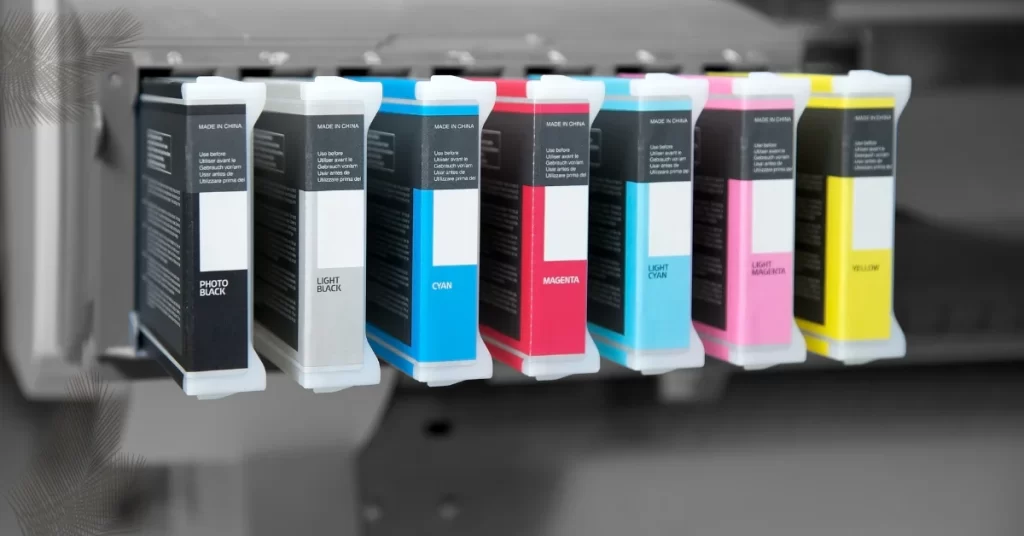
Choosing the Right Sublimation Ink
Selecting the appropriate ink is crucial for achieving the best results. Here are some factors to consider:
- Brand Compatibility: Ensure the sublimation ink you choose is compatible with your specific printer model. Some popular brands include Epson, Sawgrass, and Hiipoo.
- Ink Quality: Look for inks that offer high-color vibrancy, durability, and resistance to fading. Reading reviews and user testimonials can help you identify reliable options.
- Cost Considerations: While higher-quality inks may be more expensive, they often provide better results and longevity, making them a worthwhile investment.
Printing Process
Once your printer is prepared and you have the right ink, follow these steps to print with sublimation ink:
- Load the Ink: Ensure the sublimation ink cartridges are properly installed and filled. Run a test print to verify the ink flow is consistent.
- Select the Correct Paper: Use a sublimation paper specifically designed for this type of ink. Load the paper into the printer, ensuring it’s aligned correctly.
- Adjust Printer Settings: Double-check your printer settings to ensure they match the type of sublimation paper and desired print quality.
- Print Your Design: Send your design to the printer, mirroring the image if you’re printing on transfer paper for application onto fabric or other materials.
- Heat Press Application: If transferring the print onto a surface, use a heat press to transfer the design. Follow the manufacturer’s temperature, pressure, and duration instructions for the best results.
Tips for Achieving the Best Results:
- Consistent Cleaning: Regularly clean your printer to prevent clogs and maintain print quality.
- Test Prints: Perform test prints to adjust settings and ensure colors are accurate before starting a larger project.
- Temperature Control: Use a reliable heat press and monitor temperature settings closely to avoid damaging the material.
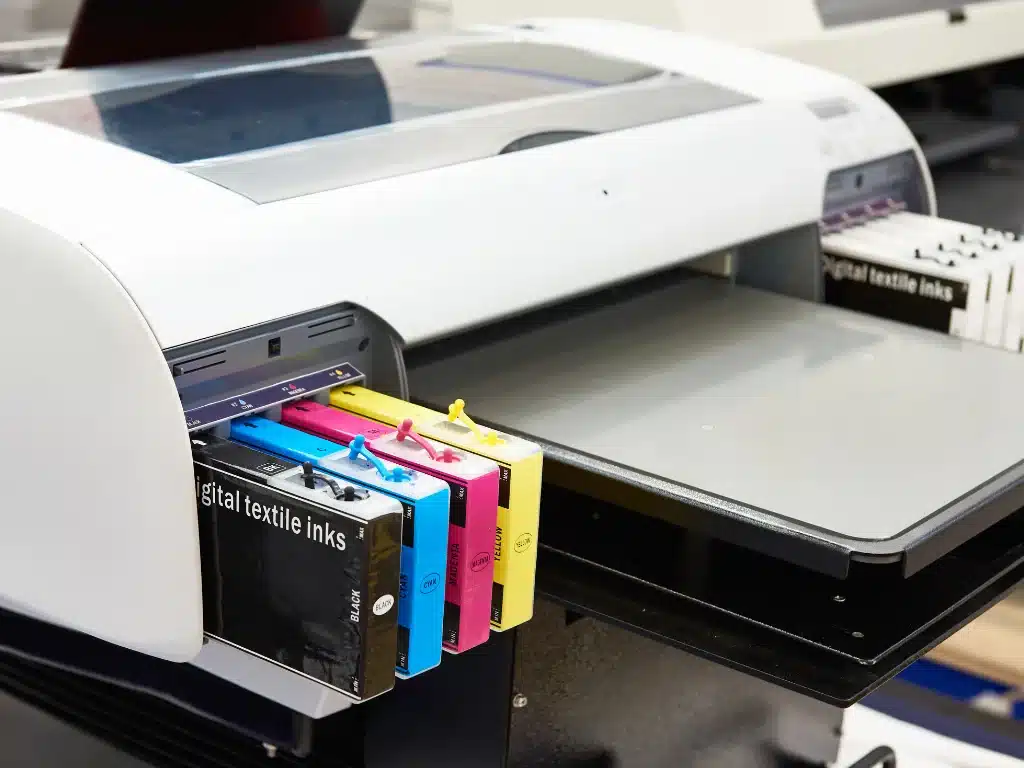
Troubleshooting Common Issues
Print Quality Problems
- Blurring or Smudging:
- Cause: Excessive moisture or incorrect paper type.
- Solution: Use high-quality sublimation paper and ensure it is dry before printing. Adjust the printer settings to match the paper type.
- Color Inaccuracies:
- Cause: Incorrect color profiles or settings.
- Solution: Calibrate your printer and monitor. Use ICC profiles designed for your specific sublimation ink and printer model to achieve accurate color reproduction.
- Banding or Streaks:
- Cause: Clogged printhead or low ink levels.
- Solution: Perform a printhead cleaning cycle to clear any clogs. Check ink levels and refill or replace cartridges as needed.
- Poor Image Transfer:
- Cause: Incorrect heat press settings or unsuitable transfer material.
- Solution: Ensure your heat press is set to the correct temperature, pressure, and duration for the material you are transferring onto. Use compatible substrates like polyester fabrics or specially coated items.
Printer Maintenance
- Regular Cleaning:
- Cleaning the Printhead: Perform regular printhead cleanings to prevent clogs and maintain print quality. Follow your printer’s maintenance instructions for the best results.
- Cleaning the Ink Lines: Occasionally flush the ink lines with a cleaning solution to remove any buildup and ensure smooth ink flow.
- Routine Checks:
- Nozzle Checks: Run nozzle checks regularly to ensure all printhead nozzles function correctly. This helps identify and resolve issues before they affect print quality.
- Alignment Tests: Perform printhead alignment tests to ensure accurate print positioning and avoid misalignment issues.
- Proper Storage:
- Ink Storage: Store sublimation ink cartridges in a cool, dry place to prevent the ink from drying out or becoming contaminated.
- Printer Storage: If the printer will not be used for an extended period, properly store it according to the manufacturer’s guidelines to prevent ink from drying in the printhead.
Comparing Costs: Sublimation Ink vs. Regular Ink
Cost of Sublimation Ink
When considering the transition to sublimation ink for your regular printing needs, it’s essential to understand the associated costs:
- Initial Investment: Sublimation ink cartridges are more expensive than regular ink cartridges. This is due to the specialized nature of the ink and the specific requirements for sublimation printing.
- Printer Modifications: Depending on your printer model, you may need to invest in cleaning solutions and possibly additional equipment to modify your printer for sublimation ink use.
- Sublimation Paper: Unlike regular paper, sublimation paper is specially coated to work with sublimation ink, adding another layer of cost to your printing setup.
Long-term Cost-Effectiveness
While the initial costs can be higher, sublimation ink can offer long-term benefits that may justify the investment:
- Durability of Prints: Sublimation prints are highly durable, resistant to fading, and better able to withstand washing and UV exposure than regular prints. This means fewer reprints and replacements over time.
- Vibrant and High-Quality Results: The superior color vibrancy and quality of sublimation prints can enhance the perceived value of your printed products, potentially allowing you to charge a premium price.
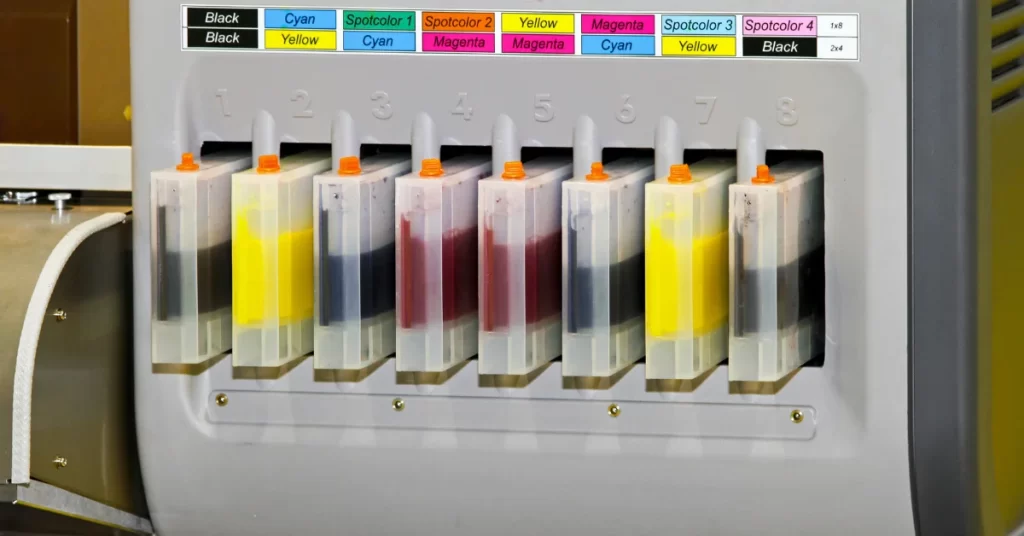
Comparative Analysis: Is It Worth the Investment?
To determine if sublimation ink is worth the investment for your regular printing needs, consider the following:
- Benefits:
- Enhanced Print Quality: The vivid and long-lasting prints created with sublimation ink can significantly improve the quality of your printed products.
- Versatility: Sublimation printing allows for a wider range of applications, such as custom apparel, mugs, and other promotional items, which may not be possible with regular ink.
- Drawbacks:
- Higher Initial Costs: The upfront investment in sublimation ink, specialized paper, and potential printer modifications can be significant.
- Learning Curve: Adapting to the sublimation printing process may require time and effort to achieve the best results.
- Suitability for Your Needs:
- Project Scope: If your printing projects demand high durability and vibrant colors, the investment in sublimation ink may be worthwhile.
- Volume of Printing: The long-term cost savings and quality improvements of sublimation printing can outweigh the initial costs for large-scale printing operations.
Final Thoughts:
Switching to sublimation ink for regular printing can open up a world of vibrant, durable prints that far surpass what traditional inks offer. While the journey may require an initial investment in time, money, and effort, the end results are often well worth it.
Recap of Key Points:
- Understanding Sublimation Ink: When heated, sublimation ink transforms from solid to gas, bonding with materials to create vivid, long-lasting prints.
- Compatibility: Not all regular printers can use sublimation ink. Inkjet printers with piezoelectric printheads, like many Epson models, are compatible, but some modifications and careful preparation are required.
- Step-by-Step Guide: Properly cleaning your printer, using high-quality sublimation ink, and adjusting printer settings are crucial steps. Using the right paper and maintaining your equipment will also help ensure success.
- Troubleshooting: Common issues, such as print quality problems and printer maintenance challenges, can be managed with regular cleaning, proper settings, and routine checks.
- Cost Comparison: While sublimation ink involves higher initial costs, its durability and vibrant results can offer long-term benefits, especially for high-quality printing needs.
Final Tips and Recommendations:
Stay Informed: Keep up with the latest tips, techniques, and products in sublimation printing to continually improve your results.
Experiment and Test: Before committing to large projects, experiment with small prints to fine-tune your process and settings.
Maintain Your Equipment: Regular maintenance will prolong the life of your printer and ensure consistent print quality.
Explore the world of sublimation and printers with our comprehensive guide. For more information or a step-by-step how-to guide, click here.
If you have any questions or want to share your experiences with sublimation ink and regular printing, please leave a comment below. For more in-depth guides and tips on printing techniques, check out our related articles or subscribe to our newsletter. Happy printing!
FAQs:
What is the difference between sublimation ink and regular ink? Sublimation ink is a dye-based ink designed for use with heat and specific transfer paper and materials, while regular ink is a pigment-based ink used for printing on regular paper.
Can sublimation ink be used on any material? Sublimation ink can be used on various materials, including fabric and ceramic, but it must be used with the appropriate transfer paper and heat press.
Is sublimation printing more expensive than traditional printing? Sublimation printing can be more expensive than traditional printing due to the cost of sublimation transfer paper and specialized equipment.
Is sublimation printing a permanent print? Yes, sublimation printing creates a permanent print that will not fade or peel.
Can sublimation ink be used with any printer? No, sublimation ink must be used with a compatible printer with sublimation ink cartridges.
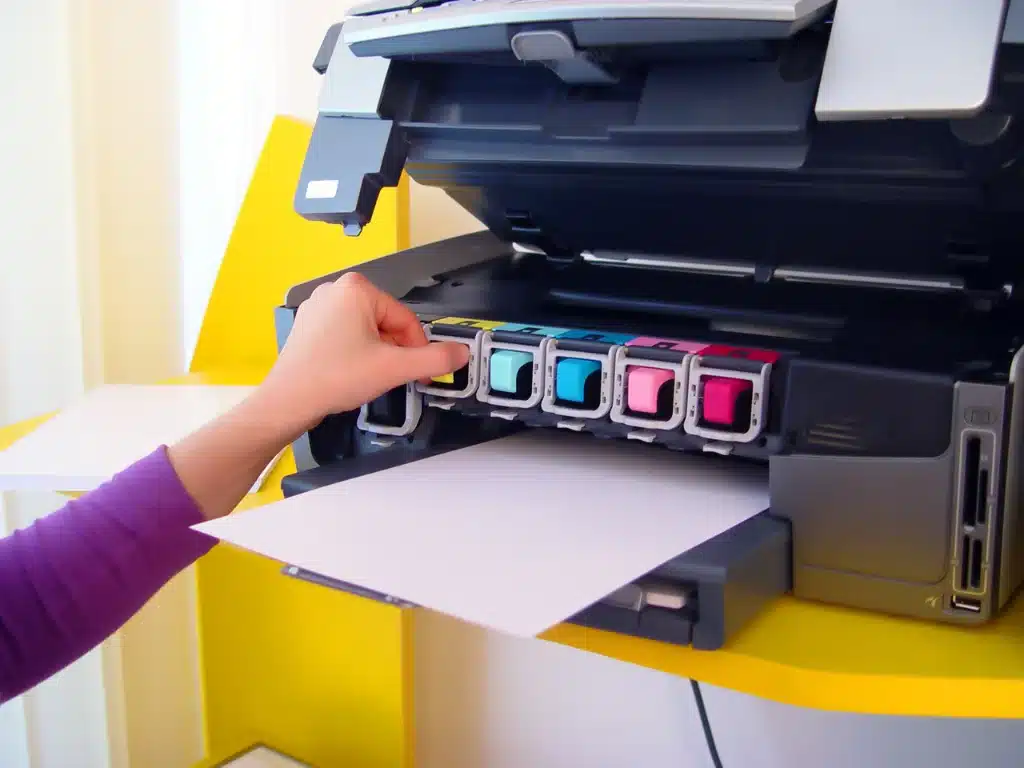
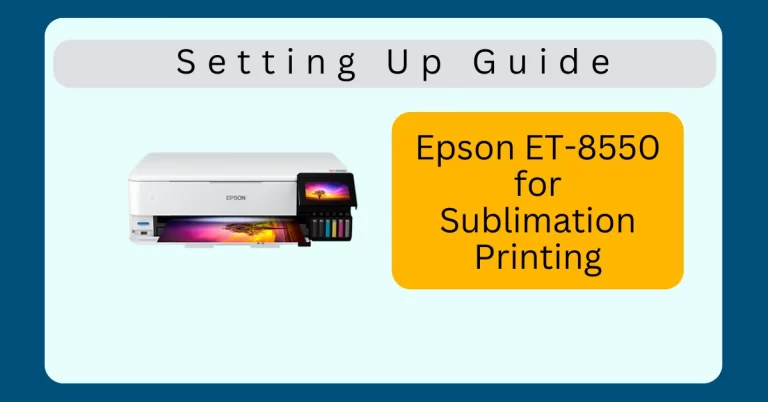
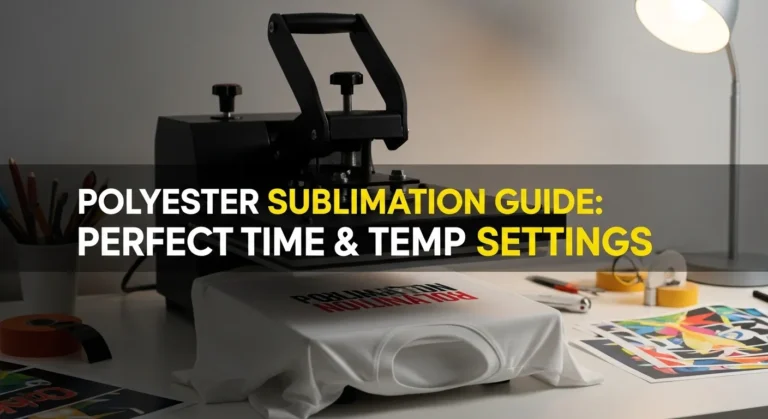

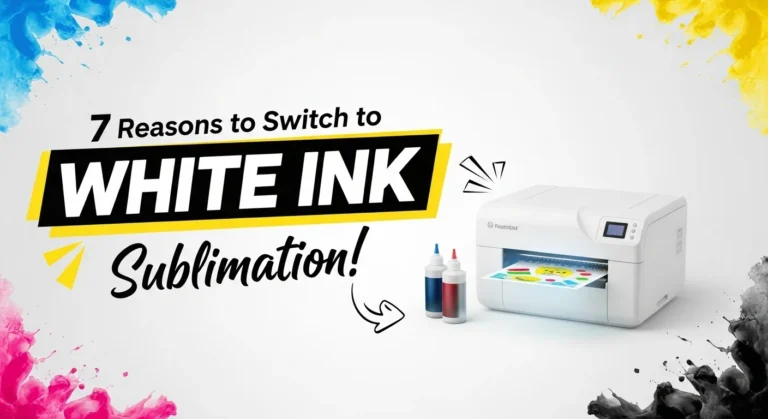
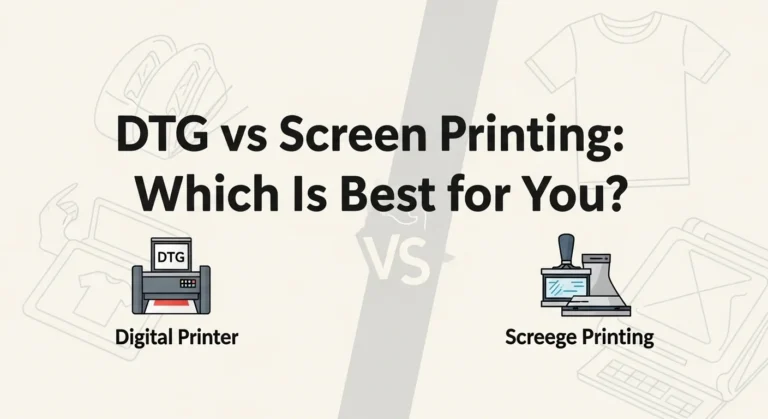
One Comment